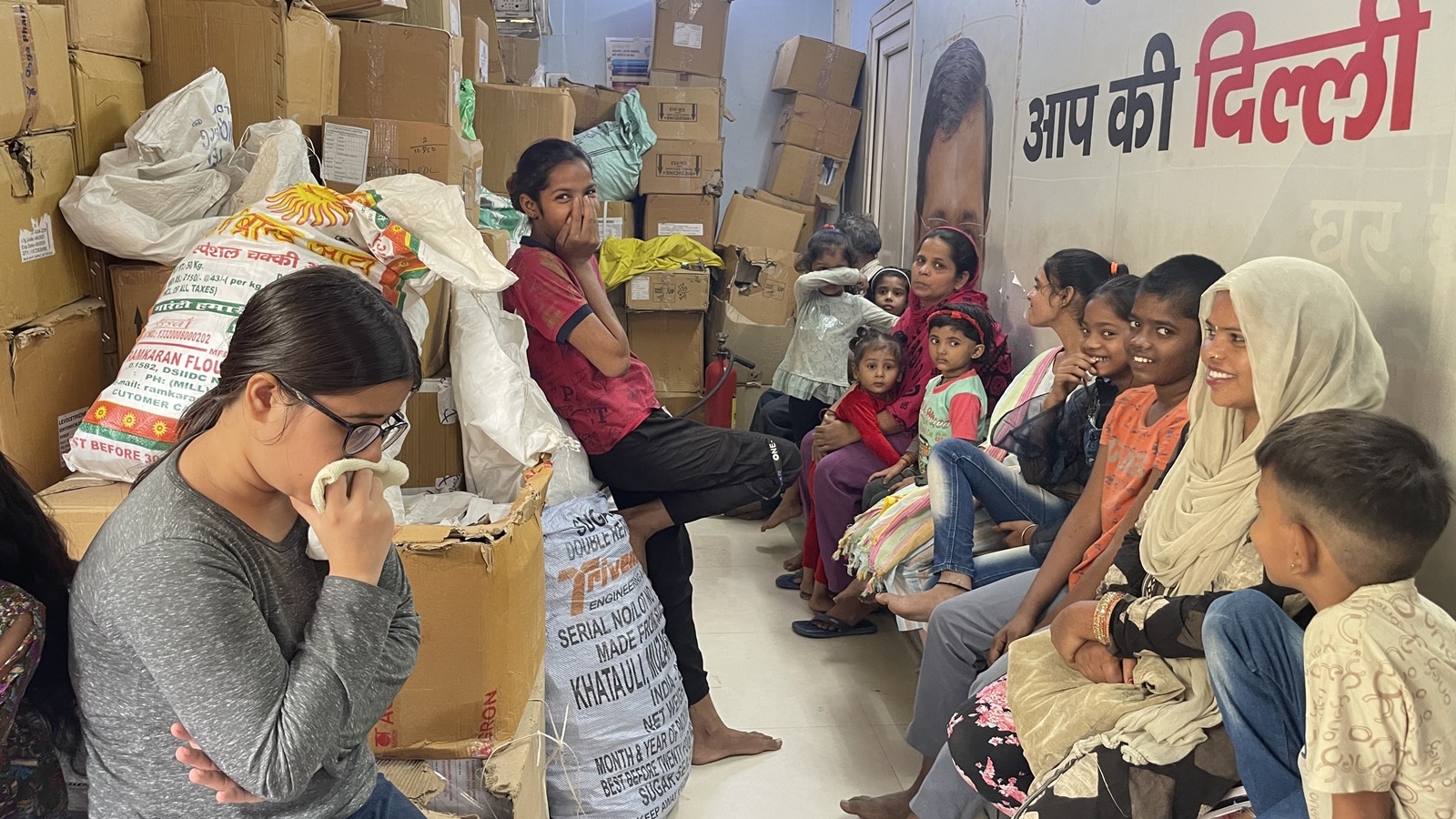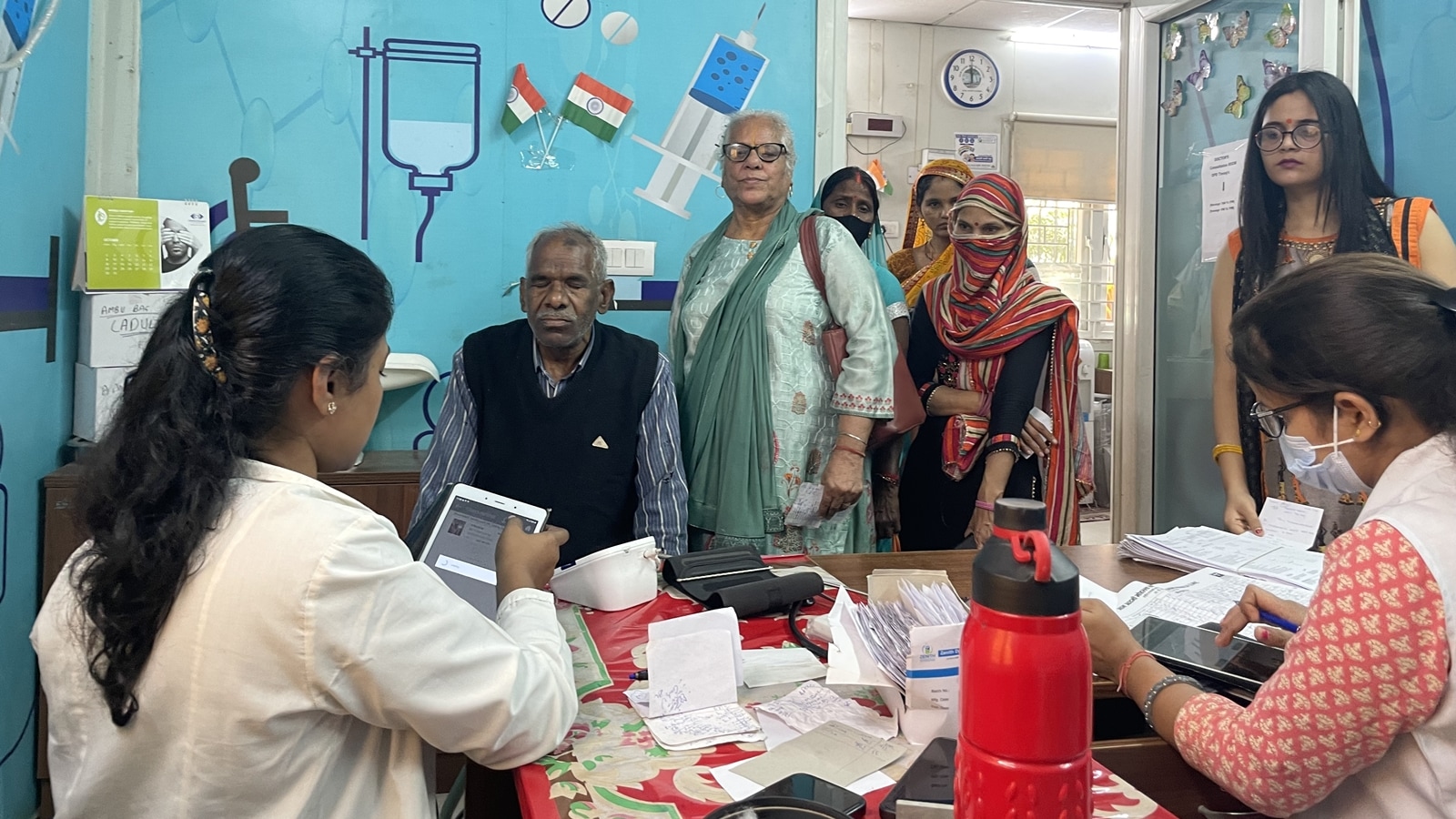Inside a mohalla clinic in Delhi’s most polluted neighbourhood: cough, cold and headaches are common complaints
What happens when the air quality index hovers around the 500-level mark for a week?
 On the Central Pollution Control Board's scale, an AQI between 201 and 300 is “poor”, 301-400 is “very poor”, 401-450 is “severe”, and anything higher is in the “severe plus” category. (Express photo by Ankita Upadhyay)
On the Central Pollution Control Board's scale, an AQI between 201 and 300 is “poor”, 301-400 is “very poor”, 401-450 is “severe”, and anything higher is in the “severe plus” category. (Express photo by Ankita Upadhyay)
The clinic is filled with a distressing symphony of sounds – raspy and violent coughing bouts, and toddlers crying in pain. By noon, the lone bench in the waiting area of the clinic is taken and patients are now seated on the cartons of medicines lying around.
This is the Bakkarwala Aam Aadmi Mohalla Clinic in what has been the Capital’s most polluted area this past week – Mundka. With the air quality index (AQI) touching hazardous levels of over 400, Mundka, an industrial neighbourhood in West Delhi, recorded a seven-day AQI average of 446.43 between October 31 and November 6. On November 5, Mundka’a AQI touched 480.
On the Central Pollution Control Board’s scale, an AQI between 201 and 300 is “poor”, 301-400 is “very poor”, 401-450 is “severe”, and anything higher is in the “severe plus” category.
The crowd inside the mohalla clinic has now swelled. Most of the patients are from the nearby slum colony whose residents mostly work in the Mundka Industrial Area or as street vendors, rickshaw pullers and domestic workers. With most of the adults away at work, a number of children have come to the clinic unaccompanied. The queue of patients outside the doctor's chamber breaks every now and then, before they are told to line up again.
 Waiting for her turn outside, Tamanna, 20, says she has had difficulty breathing “ever since the season changed two weeks ago. (Express photo by Ankita Upadhyay)
Waiting for her turn outside, Tamanna, 20, says she has had difficulty breathing “ever since the season changed two weeks ago. (Express photo by Ankita Upadhyay)
Inside, Dr Amruta Nadar examines each patient, before asking her nursing assistant to make a note of the symptoms and the vitals – weight and blood pressure – before prescribing medicines. “Dawai bahar se le lena (Collect your medicines from outside),” Dr Nadar tells each of her patients, handing them their prescription.
“Most of the patients have been coming in with cough, cold, fever and breathing issues... It has been this way for five-six days now. This clinic usually gets 80-100 patients a day; now we have been seeing around 150-160,” says Dr Nadar, who was transferred to this clinic a week ago from another mohalla clinic in Mundka. “Though many of them are existing patients of COPD (chronic obstructive pulmonary disease) and asthma, we are witnessing a worsening of their condition now. We have also been seeing a number of new patients who are coming in with fever, cough, cold and breathing issues,” she adds.
 Jayesh and Devi getting their details updated on the tablet. (Express photo by Ankita Upadhyay)
Jayesh and Devi getting their details updated on the tablet. (Express photo by Ankita Upadhyay)
Dr Nadar says she has largely been sticking to symptomatic treatment for her patients. “For those who have difficulty breathing, we give bronchodilators. It's a type of medication that makes breathing easier by relaxing the muscles in the lungs and widening the airways,” she explains, adding that she has prescribed bronchodilators to 50 patients this past week. The severe cases, she said, are referred to Sanjay Gandhi Hospital, around 10 km away.
 Long queues, stretched staff: Inside clinic in Delhi’s most polluted area,(Express photo by Ankita Upadhyay)
Long queues, stretched staff: Inside clinic in Delhi’s most polluted area,(Express photo by Ankita Upadhyay)
One of her patients today is Jayesh Lal. The 12-year-old has had difficulty breathing, making it difficult for him to speak. His mother Devi steps in, saying Jayesh has been struggling to sleep for the past 3-4 days. “I took him for jhaad-phook (to a black-magic practitioner)... The other children in our neighbourhood recovered, but his cough didn't stop, so I got him here,” she tells the doctor, who chides him. Devi runs a roadside stall in Mundka, where she sells pots and pans.
Waiting for her turn outside, Tamanna, a 20-year-old college-going student, says she has had difficulty breathing “ever since the season changed two weeks ago, but now it has worsened”. In between fits of coughs, she says, “I have a terrible headache now. Initially, I thought it was a normal flu but this is just not going away,” she adds.
Next to her, Ashma Khatoon, 45, who works as a cook, says she has been suffering too – of cough, cold and breathing issues. “I also have high blood pressure and it has made it very difficult for me to work. When I travel in an e-rickshaw, it feels as if my head will explode. The air is so bad,” she says.







